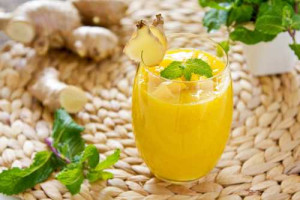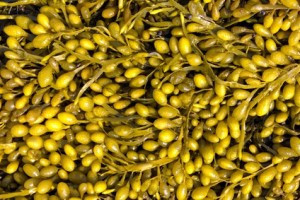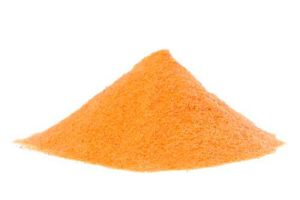Kelp
NEWS: This superfood is now available in the SANEStore as a convenient whole-food powder so you can more easily enjoy it in smoothies and recipes.

Sea kelp (laminaria), the most prolific sea plant on America’s shores, contains algin, carrageenan, iodine, potassium, bromine, mucopolysaccharides, mannitol, alginic acid, kainic acid, laminine, histamine, zeaxanthin, protein, vitamins A, B, E, D, K, C, and is rich in minerals. Kelp contains sodium alginate (algin), an element that may help remove radioactive particles and heavy metals from the body. Algin, carrageenan and agar are kelp gels that may rejuvenate gastrointestinal health and aid digestion. Kelp may work as a blood purifier, relieve arthritis stiffness, and promotes adrenal, pituitary and thyroid health. Its natural iodine can normalize thyroid-related disorders like overweight and lymph system congestion. It is a demulcent that helps eliminate herpes outbreaks.
One of the richest sources of minerals in the vegetable kingdom kelp, contains high amounts of calcium and phosphorous and is extremely high in magnesium, iron, iodine and sodium. Organic raw Kelp is a brown seaweed and a great natural source of Iodine / Potassium iodide (KI). Iodine is a chemical element essential for the production of thyroid hormones that regulate growth and metabolism. Diets deficient in iodine increase risk of retarded brain development in children (cretinism), mental slowness, high cholesterol, lethargy, fatigue, depression, weight gain, and goiter: a swelling of the thyroid gland in the neck. The natural Potassium iodide (KI) / Iodine from Sea Kelp / Rockweed is absorbed by your body more slowly and safely than chemical or synthetic iodine. Further Kelp / Rockweed helps promote an alkaline pH balance within the body and also boosts the immune system.
Iodine / Potassium iodide (KI), administered orally immediately after exposure to certain types of radiation, may be used to protect the thyroid from ingested radioactive iodine. But Potassium iodide (KI) would only be effective if the radiation contains radioactive iodine.
Raw organic Kelp is also excellent for aiding in systemic detoxification due to its naturally high levels of a polysaccharide called alginic acid. Scientific researchers, including a team led by Dr. Tanaka at McGill University, have demonstrated that alginic acid binds with any heavy metals found in the intestines, renders them indigestible, and causes them to be eliminated. So, heavy metals, such as barium, cadmium, lead, mercury, zinc, and even radioactive strontium, that may be present in the intestines will not be absorbed by the body when alginic acid is present. What’s more, Dr. Tanaka’s research has shown that the alginic acid in sea vegetables actually helps bind and draw out any similar toxins that are already stored in our bodies, thus “lowering the body’s burden.”
Doctors Seibin and Teruko Arasaki, Japanese scientists who have published several books about sea vegetables, also report this cleansing property of alginic acid in their book Vegetables From the Sea. They conclude, “Heavy metals taken into the human body are rendered insoluble by alginic acid in the intestines and cannot therefore be absorbed into body tissues.”
Why Try Kelp Superfood?
- Great natural source of Iodine / Potassium iodide (KI)
- Ability to scavenge chemicals, drugs, heavy metals, & radioisotopes throughout the body
- May Improve circulation
- May prevent cholesterol buildup in the body
- Polysaccharides: important in the prevention of degenerative diseases
- May reduce inflammation
- Helping normalizing blood pressure
- Boosting metabolism
- May Improve bladder disorders
- Helping to inhibit arteriosclerosis
- Normalizing thyroid function
- More vitamin C than oranges
- Improving kidney function
- Good natural source of vitamin K
- May reduce hypertension
- May support recovery from cancer & radiation poisoning
- Strengthens an underactive thyroid
- Excellent source of bioavailable iron
- May play a role in lowering risk of estrogen-related problems
- Antiviral, anticoagulant, & antithrombotic properties
- Contains fucoidans which may have anti-inflammatory benefits
- Natural source of the mineral vanadium which appears to play a multi-faceted role in regulation of carbohydrate metabolism & blood sugar
References
1. a b M. D. Guiry & Wendy Guiry (2006-11-23). “Ascophyllum nodosum (Linnaeus) Le Jolis”. AlgaeBase.
2. a b c W. R. Taylor (1962). Marine Algae of the Northeastern Coast of North America. Ann Arbor, University of Michigan Press. ISBN 0-472-04904-6.
3. S. Hiscock (1979). “A field key to the British brown seaweeds (Heterokontophyta)”. Field Studies 5: 1–44.
4. H. Stegenga, J. J. Bolton & R. J. Anderson (1997). Seaweeds of the South African West Coast. Bolus Herbarium Humber 18, University of Cape Town. ISBN 0-7992-1793-X.
5. M. J. Lynn (1949). “A rare alga from Larne Lough”. Irish Naturalists’ Journal 9: 301–304.
6. D. C. Gibb (1957). “The free-living forms of Ascophyllum nodosum (L.) Le Jol”. Journal of Ecology (British Ecological Society) 45 (1): 49–83. doi:10.2307/2257076. JSTOR 2257076.
7. O. Morton (2003). “The marine macroalgae of County Donegal, Ireland”. Bulletin of the Irish Biogeographical Society 27: 3–164.
8. O. Morton (1994). Marine Algae of Northern Ireland. Ulster Museum, Belfast. ISBN 0-900761-28-8.
9. J. R. Lewis (1964). The Ecology of Rocky Shores. English Universities Press, London.
10. Schonbeck, M. W.; Norton, T. A. (1980). “Factors controlling the ower limits of fucoid algae on the shore”. J.exp.mar.biol. ecol. 43: 131–150.
11. Seip, K. L. (1980). “A mathematical model of competition and colonization in a community of marine benthic algae”. Ecological modelling 10: 77–104.
12. Seip K. L. “Mathematical models of rocky shore ecosystems”. In: Jørgensen S. E. & Mitch W J. (Eds.) Application of ecological modelling in environmental management, Part B, Chap 13, pp 341-433.
13. Polyphenols in brown algae Fucus vesiculosus and Ascophyllum nodosum: Chemical defenses against the marine herbivorous snail, Littorina littorea. J. A. Geiselman and O. J. McConnell, Journal Of Chemical Ecology,1981, Volume 7, Number 6, pages 1115-1133, doi:10.1007/BF00987632.
14. C. A. Maggs (1993). Seaweeds of the British Isles. Vol. I: Rhodophyta. Part 3A. Natural History Museum, London. ISBN 0-11-310045-0.
15.F. Børgesen (1903). Botany of the Færöes Part II, pp. 339-532. Det nordiske Forlag Ernst Bojesen, Copenhagen.
16. F. E. Round (1981). The Ecology of Algae. Cambridge University Press Cambridge. ISBN 0-521-22583-3.
17. F. G. Hardy & M. D. Guiry (2006). A Check-list and Atlas of the Seaweeds of Britain and Ireland. British Phycological Society, London. ISBN 3-906166-35-X.
18. H. Stegenga, I. Mol, W. F. Prud’homme van Reine & G. M. Lokhorst (1997). “Checklist of the marine algae of the Netherlands”. Gorteria. supplement 4: 3–57.
19. A. W. Miller, A. L. Chang, N. Cosentino-Manning & G. M. Ruiz (2004). “A new record and eradication of the north Atlantic alga Ascophyllum nodosum (Phaeophyceae) from San Francisco Bay, California, USA”. Journal of Phycology 40 (6): 1028–1031. doi:10.1111/j.1529-8817.2004.04081.x.
20. http://www.fao.org/docrep/005/ac860e/ac860e02.htm.
21. J. Norrie & D. A. Hiltz (1999). “Seaweed Extract Research and Applications in Agriculture”. Agro food Industry hi-tech.
22. L. G. Lewis, N. F. Stanley & G. G. Guist (1988). “Commercial production and applications of algal hydrocolloides”. In C. A. Lembi & J. R. Waaland. Algae and Human Affairs. Cambridge University Press, Cambridge. ISBN 0-521-32115-8.
23. M. D. Guiry & D. J. Garbary (1991). “Geographical and Taxonomic guide to European Seaweeds of Economic Importance”. In M. D. Guiry & Blunden. Seaweed Resources in Europe: Uses and Potential. John Wiley & Sons, England. ISBN 0-471-92947-6.
24. a b c Chang A. L., Blakeslee A. M. H., Miller A. W. & Ruiz G. M. (2011). “Establishment Failure in Biological Invasions: A Case History of Littorina littorea in California, USA”. PLoS ONE 6(1): e16035. doi:10.1371/journal.pone.0016035.
25. Seip,K.L. 1979. A mathematical model for the uptake of heavy metals in benthic algae. Ecological modelling 6: 183-197.









